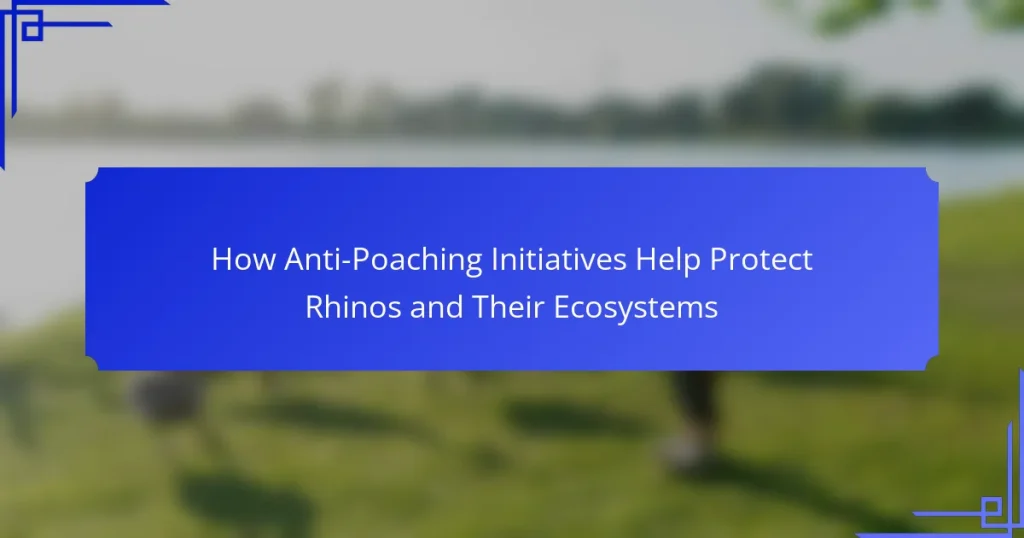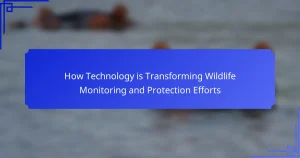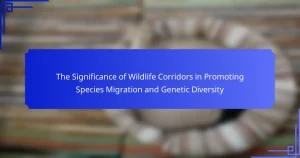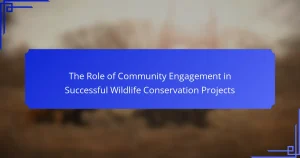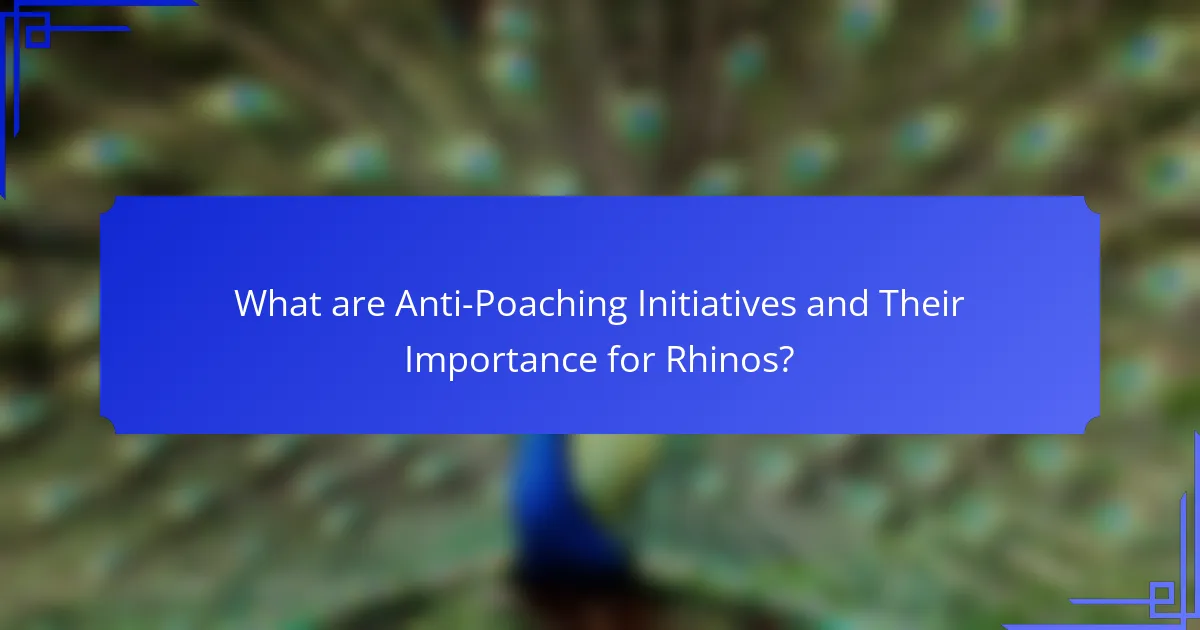
What are Anti-Poaching Initiatives and Their Importance for Rhinos?
Anti-poaching initiatives are strategies and actions designed to prevent the illegal hunting of rhinos. These initiatives are crucial for rhino conservation as they directly combat the decline in rhino populations due to poaching. Poaching threatens rhinos for their horns, which are highly valued in illegal markets. Effective anti-poaching measures include increased ranger patrols, surveillance technology, and community engagement. According to the World Wildlife Fund, these efforts have shown success in reducing poaching rates in several regions. For example, in South Africa, enhanced anti-poaching tactics led to a decrease in rhino deaths from 1,215 in 2014 to 594 in 2019. Thus, anti-poaching initiatives play a vital role in safeguarding rhinos and maintaining biodiversity in their ecosystems.
How do Anti-Poaching Initiatives work to protect Rhinos?
Anti-poaching initiatives work to protect rhinos by implementing various strategies to deter illegal hunting. These strategies include increased surveillance and patrolling of rhino habitats. Anti-poaching teams often consist of trained rangers who monitor areas known for poaching activity. Technology such as drones and camera traps enhances monitoring efforts.
Legal frameworks are also strengthened to impose harsher penalties on poachers. Community engagement programs educate local populations about rhino conservation. Economic incentives, such as ecotourism, provide alternative livelihoods to communities.
According to the World Wildlife Fund, these measures have led to a decrease in rhino poaching incidents in several regions. For example, South Africa reported a 33% drop in rhino poaching from 2018 to 2019 due to enhanced anti-poaching efforts.
What strategies are employed in Anti-Poaching Initiatives?
Anti-poaching initiatives employ several strategies to combat wildlife crime. These strategies include increased surveillance and monitoring of protected areas. Drones and camera traps are commonly used for aerial surveillance. Ground patrols by trained rangers help deter poachers. Community engagement programs educate locals about conservation benefits. Legal frameworks are strengthened to impose harsher penalties on poachers. Collaboration with international organizations enhances resource sharing and intelligence. Technology, such as GPS tracking, aids in tracking endangered species. These approaches collectively aim to reduce poaching incidents and protect ecosystems.
How do these strategies directly benefit Rhino populations?
Anti-poaching strategies directly benefit rhino populations by reducing illegal hunting and enhancing their survival rates. These strategies include increased patrols and surveillance in rhino habitats. Enhanced protection leads to lower poaching incidents. For example, in South Africa, anti-poaching efforts have resulted in a 30% decrease in poaching rates since 2015. Additionally, community engagement programs promote coexistence and support for rhinos. Such initiatives foster local stewardship of wildlife. As a result, rhino populations experience growth and improved genetic diversity. Overall, these strategies create safer environments for rhinos, ensuring their long-term sustainability.
Why are Rhinos critical to their ecosystems?
Rhinos are critical to their ecosystems as they play a vital role in maintaining the health of their habitats. Their grazing habits help shape the landscape, promoting biodiversity. By consuming large amounts of grass, rhinos create open spaces for other species to thrive. This activity encourages the growth of various plants, which supports a wide range of wildlife.
Additionally, rhinos contribute to nutrient cycling through their dung, which fertilizes the soil. This process enhances plant growth and supports the entire food web. Studies show that areas with healthy rhino populations have greater biodiversity compared to regions without them. Their presence is essential for ecological balance, making them a keystone species in their environments.
What roles do Rhinos play in maintaining ecological balance?
Rhinos play a crucial role in maintaining ecological balance as keystone species. They help shape their environment by grazing on vegetation, which promotes biodiversity. Their feeding habits prevent overgrowth of certain plant species. This grazing behavior allows other species to thrive by creating a more varied habitat. Additionally, rhinos contribute to nutrient cycling through their dung, which enriches the soil. Their presence supports a range of other wildlife, fostering a balanced ecosystem. Studies show that areas with healthy rhino populations have greater plant diversity and stability. Thus, protecting rhinos is essential for sustaining ecological health.
How does the decline of Rhino populations impact biodiversity?
The decline of Rhino populations negatively impacts biodiversity. Rhinos are considered a keystone species in their ecosystems. Their grazing habits help maintain the structure of grasslands and savannas. This, in turn, supports a variety of plant and animal species. When rhino numbers decrease, the balance of these ecosystems is disrupted. Other species that rely on the same habitat may also decline. Studies show that the loss of rhinos can lead to decreased genetic diversity in various species. This loss can make ecosystems more vulnerable to changes and reduce resilience. Thus, the decline of Rhino populations has far-reaching effects on overall biodiversity.
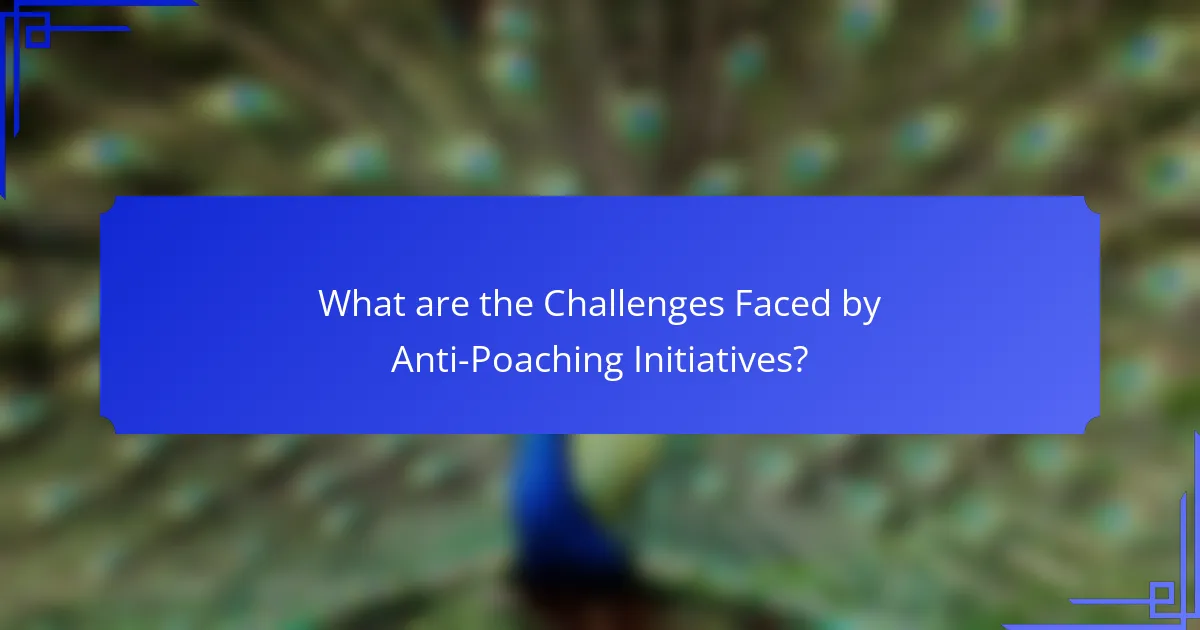
What are the Challenges Faced by Anti-Poaching Initiatives?
Anti-poaching initiatives face several challenges that hinder their effectiveness. One major challenge is the lack of funding. Many initiatives operate on limited budgets, which restricts their ability to implement comprehensive strategies. Additionally, corruption within local law enforcement can undermine efforts to combat poaching. In some regions, officials may be bribed to ignore illegal activities.
Another significant challenge is the high demand for rhino horn in illegal markets. This demand incentivizes poachers to continue their activities despite risks. Furthermore, poachers often employ advanced technology, such as drones and night vision equipment, making them harder to detect.
The geographical remoteness of some protected areas complicates monitoring and enforcement. Many regions lack adequate infrastructure, which hampers rapid response to poaching incidents. Community engagement is also a critical issue. Without local support, initiatives may struggle to gain intelligence on poaching activities.
Lastly, climate change poses a long-term threat to ecosystems, affecting wildlife populations and their habitats. These combined challenges create a complex environment for anti-poaching initiatives, making it difficult to achieve lasting success.
What are the primary threats to Rhinos from poaching?
The primary threats to rhinos from poaching are illegal hunting and demand for rhino horn. Poachers target rhinos for their horns, which are highly valued in some cultures for traditional medicine and as status symbols. This demand drives illegal wildlife trade, leading to significant population declines. In 2019, approximately 594 rhinos were poached in South Africa alone. The loss of rhinos disrupts ecosystems, as they play a crucial role in their habitats. Anti-poaching initiatives aim to combat these threats through increased surveillance and community engagement.
How does illegal wildlife trade affect Rhino populations?
Illegal wildlife trade severely impacts rhino populations. Poaching for rhino horns leads to significant declines in their numbers. According to the World Wildlife Fund, more than 1,000 rhinos were poached in South Africa in 2013 alone. This illegal trade is driven by demand in traditional medicine and luxury markets. The loss of [censured] rhinos disrupts breeding and social structures within populations. Additionally, habitat loss exacerbated by poaching pressures further threatens their survival. Conservation efforts are critical to combat these challenges and protect remaining rhino populations.
What are the socio-economic factors contributing to poaching?
Poverty and lack of economic opportunities are primary socio-economic factors contributing to poaching. In many regions, communities rely on poaching as a source of income. Limited access to education and job training exacerbates this issue. High demand for wildlife products fuels illegal trade, increasing poaching activities. Corruption within local governance can hinder enforcement of wildlife protection laws. Additionally, land-use conflicts drive communities to engage in poaching. Historical socio-political instability can also lead to weakened conservation efforts. These factors collectively create an environment where poaching becomes a viable economic option for many individuals.
How do Anti-Poaching Initiatives combat these challenges?
Anti-poaching initiatives combat challenges by implementing targeted strategies to reduce illegal wildlife trade. These initiatives often involve increased surveillance and patrolling in protected areas. They employ advanced technologies, such as drones and GPS tracking, to monitor wildlife and detect poachers. Training local law enforcement enhances their capacity to respond effectively to poaching threats. Community engagement fosters local stewardship, encouraging residents to protect wildlife. Collaborative efforts with international organizations strengthen legal frameworks against poaching. Data collection and research inform adaptive management strategies. According to the World Wildlife Fund, these efforts have led to a decrease in rhino poaching rates in several regions.
What innovative technologies are being used in Anti-Poaching efforts?
Innovative technologies used in anti-poaching efforts include drones, GPS tracking, and artificial intelligence. Drones are deployed for aerial surveillance, allowing for real-time monitoring of wildlife and poaching activities. GPS tracking collars are used on endangered species, enabling rangers to track their movements and detect any unusual behavior. Artificial intelligence analyzes data from various sources to identify poaching patterns and predict potential threats. Additionally, camera traps equipped with motion sensors capture images of wildlife and poachers, providing crucial evidence for law enforcement. These technologies enhance the effectiveness of anti-poaching initiatives and contribute to the protection of rhinos and their ecosystems.
How do community engagement and education play a role?
Community engagement and education are crucial in anti-poaching initiatives for rhinos. They foster local support for conservation efforts. Educated communities are more likely to participate in protecting wildlife. Awareness programs inform locals about the ecological and economic benefits of rhinos. Involving community members can lead to sustainable practices. Studies show that communities with education programs report lower poaching rates. For example, the World Wildlife Fund highlights successful initiatives in South Africa. These programs have significantly reduced rhino poaching incidents. Engaging local populations creates a sense of ownership over wildlife conservation.

What are the Success Stories of Anti-Poaching Initiatives?
Anti-poaching initiatives have led to significant success stories in wildlife conservation. One notable example is the Kruger National Park in South Africa. Enhanced anti-poaching efforts in this area resulted in a 30% decrease in rhino poaching from 2016 to 2019. Another success story is in Namibia, where community-based conservation programs have helped increase the black rhino population by over 2,000 individuals since the 1990s. The use of advanced technology, such as drones and tracking devices, has also improved monitoring and protection of endangered species. In addition, partnerships with local communities have fostered a sense of ownership and responsibility towards wildlife conservation, leading to a decline in poaching incidents. These initiatives demonstrate the effectiveness of targeted strategies in protecting rhinos and their ecosystems.
How have specific initiatives led to positive outcomes for Rhinos?
Specific initiatives have led to positive outcomes for Rhinos by significantly reducing poaching rates. Anti-poaching patrols and surveillance technology have been implemented in key habitats. For example, in South Africa, the number of rhinos poached decreased by 25% from 2019 to 2020 due to enhanced ranger training and monitoring systems. Community-based conservation programs have also engaged local populations in protection efforts. These programs provide economic incentives for communities to protect rhinos instead of poaching them. Additionally, international collaborations have strengthened law enforcement against wildlife trafficking. The integration of technology, such as drones and camera traps, enhances monitoring capabilities. These combined efforts contribute to a more stable rhino population and improved ecosystem health.
What metrics are used to measure the success of these initiatives?
Metrics used to measure the success of anti-poaching initiatives include rhino population growth, reduction in poaching incidents, and increased habitat protection. Rhino population growth indicates the effectiveness of conservation efforts. Monitoring poaching incidents provides data on the direct impact of initiatives. Increased habitat protection reflects the broader ecological benefits of these initiatives. Additionally, community engagement levels and anti-poaching patrol effectiveness are also considered. These metrics help assess the overall success and sustainability of anti-poaching strategies.
Which regions have seen the most significant improvements?
Southern Africa has seen the most significant improvements in rhino populations due to anti-poaching initiatives. Countries like South Africa and Namibia have implemented successful conservation strategies. These strategies include enhanced anti-poaching patrols and community engagement programs. South Africa’s rhino population increased from 18,000 in 2012 to about 18,500 in 2021. Namibia has seen similar successes, with its population stabilizing through effective management practices. These improvements demonstrate the effectiveness of targeted conservation efforts in these regions.
What lessons can be learned from successful Anti-Poaching Initiatives?
Successful anti-poaching initiatives demonstrate the importance of community involvement. Engaging local communities fosters stewardship and reduces poaching. Education and awareness programs are vital for changing attitudes towards wildlife conservation. Effective law enforcement is essential to deter poachers. Collaboration with international organizations enhances resources and expertise. Monitoring and data collection are critical for assessing the effectiveness of strategies. Financial incentives for communities can provide alternative livelihoods and reduce reliance on poaching. Successful initiatives often adapt to local contexts and incorporate traditional knowledge.
How can these lessons be applied to future conservation efforts?
Lessons from anti-poaching initiatives can inform future conservation efforts by emphasizing community involvement. Engaging local communities fosters stewardship and reduces poaching rates. For instance, successful programs have shown that when communities benefit from conservation, they actively participate in protecting wildlife. Education and awareness campaigns are also crucial. They help change perceptions about wildlife and the importance of conservation. Data from the World Wildlife Fund indicates that such approaches can lead to a 50% reduction in poaching incidents. Furthermore, collaboration with law enforcement enhances enforcement capabilities against poaching. This multi-faceted approach ensures more sustainable conservation outcomes.
What can individuals do to support Anti-Poaching Initiatives?
Individuals can support anti-poaching initiatives by donating to wildlife conservation organizations. These organizations often rely on funding for anti-poaching patrols and education programs. Volunteering time with local conservation groups also aids in awareness and community engagement. Educating others about the impact of poaching helps to increase public support. Purchasing sustainable products reduces demand for illegal wildlife products. Advocating for stronger laws against poaching can influence policy changes. Supporting ecotourism promotes conservation efforts while providing economic benefits to local communities. Engaging in social media campaigns raises awareness and encourages collective action.
What are the best practices for supporting Rhino conservation efforts?
Supporting rhino conservation efforts involves several best practices. First, funding anti-poaching initiatives is crucial. These programs help protect rhinos from illegal hunting. Second, community engagement is essential. Involving local communities fosters sustainable practices. Third, education and awareness campaigns increase public knowledge about rhinos. This can lead to greater support for conservation. Fourth, promoting ecotourism provides financial incentives for local populations. This reduces reliance on poaching. Fifth, collaborating with international organizations enhances resource sharing and expertise. Lastly, implementing strict law enforcement policies deters poaching activities. These practices collectively contribute to the protection of rhinos and their ecosystems.
How can awareness and advocacy make a difference?
Awareness and advocacy can significantly impact anti-poaching initiatives. Increased awareness leads to greater public understanding of the threats faced by rhinos. This understanding can foster community support for conservation efforts. Advocacy campaigns can mobilize resources and influence policy changes. For example, successful advocacy has led to stricter anti-poaching laws in several countries. Studies show that regions with active advocacy experience lower poaching rates. Engaged communities often participate in conservation activities, enhancing local stewardship. Ultimately, awareness and advocacy create a united front against poaching, benefiting rhino populations and their ecosystems.
Anti-poaching initiatives are critical strategies aimed at preventing the illegal hunting of rhinos, which are threatened primarily for their valuable horns. This article explores the importance of these initiatives in rhino conservation, detailing effective strategies such as increased ranger patrols, surveillance technology, and community engagement. It highlights the ecological significance of rhinos as keystone species and the challenges faced by anti-poaching efforts, including funding limitations and high demand for rhino horns. Success stories from regions like South Africa and Namibia demonstrate the positive outcomes of targeted conservation strategies, while also emphasizing the role of community involvement and innovative technologies in combating poaching.
